Customer Relationship Marketing and Institutional Support Influence on the Women’s Companies Sustainability in Serbia
Abstract
1. Introduction
2. Theoretical and Hypothetical Framework
2.1. Customer Relationship Marketing (CRM)
2.1.1. Critical Success Factors in Customer Relationship Marketing Implementation
Trust
Commitments
Communication
Loyalty
Relationship between CRM Factors
- A1—Trust;
- A2—Commitment;
- A3—Communication;
- A4—Loyalty.
2.2. Institutional Framework (Ecosystem)
- Policy frameworks (WESD as a national policy priority and government focal point for the promotion and coordination);
- Gender-sensitive financial services;
- Business development support services (the participation of women entrepreneurs in generic financing programs and targeted financing programs for women entrepreneurs);
- Access to ICT technologies and markets (public procurement targeting female entrepreneurs, export promotion for women entrepreneurs, inclusive supply chains and linkages);
- Entrepreneurship education, mentoring and promotion.
- B1—A gender-sensitive legal and regulatory system that advances women’s economic empowerment;
- B2—Effective policy leadership and coordination for the promotion of WESD;
- B3—Access to gender-sensitive financial services;
- B4—Access to markets and technology;
- B5—Entrepreneurship training, mentoring and support.
2.3. Women’s Companies Sustainability Development
- C1—Economic–financial sustainability;
- C2—Social–human sustainability;
- C3—Environmental sustainability.
3. Methodology
3.1. Research Materials
3.2. Correlation and Regression Analysis
- C1—Economic–financial sustainability;
- C2—Social–human sustainability;
- C3—Environmental sustainability.
3.2.1. Correlation and Regression Analysis for Variable (AC)
3.2.2. Correlation and Regression Analysis for the Variable (BC)
3.2.3. Multiple Correlation and Regression Analysis for a Variable (ABC)
4. Results and Discussion
4.1. Contribution of the Research
4.2. Similar Studies Results
4.3. Limitations of the Study
4.4. Future Research
5. Conclusions
Author Contributions
Funding
Institutional Review Board Statement
Informed Consent Statement
Data Availability Statement
Acknowledgments
Conflicts of Interest
References
- Keeble, B.R. The Brundtland Report: Our Common Future. Med. War 1988, 4, 17–25. [Google Scholar] [CrossRef]
- Aras, G.; Crowther, D. Governance and sustainability: An investigation into the relationship between corporate governance and corporate sustainability. Manag. Decis. 2008, 46, 433–448. [Google Scholar] [CrossRef]
- Kuhlman, T.; Farrington, J. What is sustainability? Sustainability 2010, 2, 3436–3444. [Google Scholar] [CrossRef]
- Hahn, T.; Figgie, F. Beyond the Bounded Instrumentality in Current Corporate Sustainability Research: Toward an Inclusive Notion of Profitability. J. Bus. Ethics 2011, 104, 325–345. [Google Scholar] [CrossRef]
- Rizos, V.; Behrens, A.; Van der Gaast, W.; Hofman, E.; Ioannou, A.; Kafyeke, T.; Flamos, A.; Rinaldi, R.; Papadelis, S.; Hirschnitz-Garbers, M.; et al. Implementation of Circular Economy Business Models by Small and Medium-Sized Enterprises (SMEs): Barriers and Enablers. Sustainability 2016, 8, 1212. [Google Scholar] [CrossRef]
- Rolinek, L.; Kopta, D.; Plevny, M.; Rost, M.; Kubecova, J.M. Level of Process Management Implementation in SMEs and Some Related Implications. Transform. Bus. Econ. 2015, 14, 360–377. [Google Scholar]
- Rothaermel, F.; Hess, A.M. Building dynamic capabilities: Innovation driven by individual firm and network-level effects. Organ. Sci. 2007, 18, 898–921. [Google Scholar] [CrossRef]
- Haseeb, M.; Hussain, H.I.; Ślusarczyk, B.; Jermsittiparsert, K. Industry 4.0: A Solution towards Technology Challenges of Sustainable Business Performance. Soc. Sci. 2019, 8, 154. [Google Scholar] [CrossRef]
- Elkington, J. Green Swans: The Coming Boom in Regenerative Capitalism; Fast Company Press: New York, NY, USA, 2020; ISBN 9781732439122. [Google Scholar]
- Cullen, J.G. Educating Business Students About Sustainability: A Bibliometric Review of Current Trends and Research Needs. J. Bus. Ethics 2017, 145, 429–439. [Google Scholar] [CrossRef]
- Kimatu, J.N. Evolution of strategic interactions from the triple to quad helix innovation models for sustainable development in the era of globalization. J. Innov. Entrep. 2016, 5, 1–7. [Google Scholar] [CrossRef]
- UN Global Compact. United Nations Global Compact Progress Report 2018; United Nations: New York, NY, USA, 2018. [Google Scholar] [CrossRef]
- The KPMG Survey of Sustainability Reporting 2020, The Time Has Come. Available online: https://assets.kpmg/content/dam/kpmg/xx/pdf/2020/11/the-time-has-come.pdf (accessed on 10 July 2020).
- Diouf, D.; Boiral, O. The quality of sustainability reports and 2020 impression management. Account. Audit. Account. J. 2017, 30, 643–667. [Google Scholar] [CrossRef]
- Currie, G.; Knights, D.; Starkey, K. Introduction: A post-crisis critical reflection on business schools. Br. J. Manag. 2010, 21, 31–35. [Google Scholar] [CrossRef]
- Baumgartner, R.J.; Ebner, D. Corporate sustainability strategies: Sustainability profiles and maturity levels. Sustain. Dev. 2010, 18, 76–89. [Google Scholar] [CrossRef]
- Ministarstvo Privrede Republike Srbije, Izveštaj O malim I Srednjim Preduzećima I Preduzetništvu 2018. Available online: https://privreda.gov.rs/wp-content/uploads/2021/05/Izvestaj-MSPP-2018_FIN.pdf (accessed on 20 June 2021).
- Grozdanić, R.; Radović-Marković, M. Family businesses motives for internationalization: Evidence from Serbia. Fam. Bus. Transit. Econ. 2015, 267–292. [Google Scholar] [CrossRef]
- Grozdanic, R.; Radovic-Markovic, M.; Vucic, M. Female Entrepreneurship in Serbia; Institute of Economic Sciences: Belgrade, Serbia, 2009. [Google Scholar] [CrossRef]
- Grozdanic, R. Female Entrepreneurship and Local Economic Growth, Basic Institutional Infrastructural Support Needed for the Development of Women’s Entrepreneurship in Serbia; Outskirts Press: Denver, CO, Canada, 2009; ISBN 978-143-2747-55. [Google Scholar]
- OECD. SME Policy Index: Western Balkans and Turkey; OECD: Paris, France, 2019; pp. 811–881. [Google Scholar] [CrossRef]
- Miletić, V.; Ćurčić, N.; Simonović, Z. Quality standardization—A factor of sustainable competitiveness of companies in Serbia. Ann. Fac. Econ. Subot. 2020, 56, 99–114. [Google Scholar] [CrossRef]
- Smallbone, D.; Welter, F. The Role of Government in SME Development in Transition Economies. Int. Small Bus. J. 2001, 19, 63–77. [Google Scholar] [CrossRef]
- Beck, T.; Kunt, A.D. Small and medium-size enterprises: Access to finance as a growth constraint. J. Bank. Financ. 2006, 30, 2931–2943. [Google Scholar] [CrossRef]
- McCarthy, S.; Oliver, B.; Verreynne, M. Bank financing and credit rationing of Australian SMEs. Aust. J. Manag. 2017, 42, 58–85. [Google Scholar] [CrossRef]
- Camisón, C.; Villar-López, A. Organizational innovation as an enabler of technological innovation capabilities and firm performance. J. Bus. Res. 2014, 67, 2891–2902. [Google Scholar] [CrossRef]
- Chandy, R.; Tellis, G.J. The Incumbent’s Curse? Incumbency, Size and Radical Product Innovation. J. Mark. 2000, 64, 1–17. [Google Scholar] [CrossRef]
- Hausman, A.; Johnston, W. The role of innovation in driving the economy: Lessons from the global financial crisis. J. Bus. Res. 2014, 67, 2720–2726. [Google Scholar] [CrossRef]
- Santos, D.F.L.; Basso, L.F.C.; Kimura, H.; Sobreiro, V.A. Eco-innovation in the Brazilian sugar-ethanol industry: A case study. Braz. J. Sci. Technol. 2015, 2, 1–15. [Google Scholar] [CrossRef][Green Version]
- Teece, D.J.; Pisano, G.; Shuen, A. Dynamic capabilities and strategic management. Strateg. Manag. J. 1997, 18, 509–533. [Google Scholar] [CrossRef]
- Klewitz, J.; Hansen, E.G. Sustainability-oriented innovation of SMEs: A systematic review. J. Clean. Prod. 2014, 65, 57–75. [Google Scholar] [CrossRef]
- Sandberg, B.; Aarikka-Stenroos, L. What makes it so difficult? A systematic review on barriers to radical innovation. Ind. Mark. Manag. 2014, 43, 1293–1305. [Google Scholar] [CrossRef]
- Santos, G.; Salvador, J.; Reis, M.; De Oliveira, F.; Maximilian, S.; Larah, E.; Lescura, G.; Luís, A.; Ferreira, C.; Barbosa, M.; et al. The Rapid Escalation of Publications on Covid-19: A Snapshot of Trends in the Early Months to Overcome the Pandemic and to Improve Life Quality. Int. J. Qual. Res. 2020, 14, 951–968. [Google Scholar] [CrossRef]
- Triguero, Á.; Córcoles, D. Understanding innovation: An analysis of persistence for Spanish manufacturing firms. Res. Policy 2013, 42, 340–352. [Google Scholar] [CrossRef]
- Blanes, J.V.; Busom, I. Who participates in R&D subsidy programs? The case of Spanish manufacturing firms. Res. Policy 2004, 33, 1459–1476. [Google Scholar] [CrossRef]
- Hadjimanolis, A. Barriers to innovation for SMEs in a small less developed country (Cyprus). Technovation 1999, 19, 561–570. [Google Scholar] [CrossRef]
- Mitic, N.; Popovic, J.; Kvrgic, G.; Avakumovic, J.; Miloševic, D. The consumer’s satisfaction impact on the image of a modern organization. Ecologica 2021, 28, 91–98. [Google Scholar] [CrossRef]
- Leković, K.; Marić, D. Satisfaction and Loyalty as Developing Function of Customer Relationship Marketing in Terms of Globalization. Ann. Fac. Econ. Subot. 2015, 51, 59–71. [Google Scholar]
- Mandic, M. Important elements in customer relationship management. Int. J. Manag. Cases 2011, 13, 347–351. [Google Scholar] [CrossRef]
- Albaum, G. Horizontal Information Flow: An Exploratory Study. Acad. Manag. J. 1964, 7, 21–33. [Google Scholar]
- Battor, M.; Battor, M. The impact of customer relationship management capability on innovation and performance advantages: Testing a mediated model. J. Mark. Manag. 2010, 26, 842–857. [Google Scholar] [CrossRef]
- Grönroos, C. Service Management and Marketing: Customer Management in Service Competition, 3rd ed.; Wiley: New York, USA, 2007. [Google Scholar]
- Berry, L.L. Relationship marketing. In Emerging Perspectives on Services Marketing1, Proceedings Series; Berry, L.L., Shostack, G.L., Upah, G., Eds.; American Marketing Association: Chicago, IL, USA, 1983. [Google Scholar]
- Gummesson, E. The new marketing—developing long-term interactive relationship. Long Range Plan. 1987, 20, 10–20. [Google Scholar] [CrossRef]
- Jackson, B.B. Build customer relationship That Last. Harv. Bus. Rev. 1985, 12, 120–128. [Google Scholar]
- Motiwalla, L.F.; Thompson, J. Enterprise Systems for Management. Available online: http://projanco.com/Library/Enterprise%20Systems%20for%20Management-2011.pdf (accessed on 20 June 2021).
- Brown, W. Systems, Boundaries, and Information Flow. Acad. Manag. J. 1966, 94, 318–327. [Google Scholar]
- Blattberg, R.C.; Deighton, J. Manage Marketing by the Customer Equity Test. Harv. Bus. Rev. 1996, 74, 136–144. [Google Scholar] [PubMed]
- Bose, R. Customer relationship management: Key components for IT success. Ind. Manag. Data Syst. 2002, 102, 89–97. [Google Scholar] [CrossRef]
- Wyner, G. Customer Relationship Management. J. Mark. Res. 1999, 11, 39–41. [Google Scholar]
- Peppers, D.; Rogers, M. The One To One Manager: Real-world Lessons. In Customer Relationship Management; Doubleday: New York, NY, USA, 1999. [Google Scholar]
- Goldenberg, B. What Is an E-Customer? Why you Need Them Now? Paper Presented at Conference on Customer Relationship Management; Shared insights: Boston, MA, USA, 2000. [Google Scholar]
- Swift, R.S. Accelerating Customer Relationships: Using CRM and Relationship Technologies; Prentice Hal: Hoboken, NJ, USA, 2000. [Google Scholar]
- Kumar, N.; Scheer, L.K.; Steenkamp, J.B. The Effects of Supplier Fairness on Vulnerable Resellers. J. Mark. Res. 1995, 32, 54–65. [Google Scholar] [CrossRef]
- Berry, L. Relationship Marketing of Services-Growing Interest, Emerging Perspectives. J. Acad. Mark. Sci. 1995, 23, 236–245. [Google Scholar] [CrossRef]
- Hewett, K.; Money, R.B.; Sharma, S. An exploration of the moderating role of buyer corporate culture in industrial buyer-seller relationships. J. Acad. Mark. Sci. 2002, 30, 229–239. [Google Scholar] [CrossRef]
- Hibbard, J.D.; Kumar, N.; Louis, W.; Stern, L.W. Examining the Impact of Destructive Acts in Marketing Channel Relationships. J. Mark. Res. 2001, 38, 45–61. [Google Scholar] [CrossRef]
- Mohr, J.; Spekman, R. Characteristics of Partnership Success: Partnership Attributes, Communication Behavior, and Conflict Resolution Techniques. Strateg. Manag. J. 1994, 15, 135–152. [Google Scholar] [CrossRef]
- Mohr, J.; Robert JFisher, R.J.; John, R.; Nevin, J.K. Collaborative Communication in Interfirm Relationships: Moderating Effects of Integration and Control. J. Mark. 1996, 60, 103–115. [Google Scholar] [CrossRef]
- Dorsch, M.J.; Scott, R.; Swanson, S.; Kelley, W. The Role of Relationship Quality in the Stratification of Vendors as Perceived by Customers. J. Acad. Mark. Sci. 1998, 26, 28. [Google Scholar] [CrossRef]
- Ndubisi, O.N.; Tam, Y.; Ling, T.Y. Evaluating Gender Differences in the Complaint Behavior of Malaysian Consumers. Asian Acad. Manag. J. 2007, 12, 1–13. [Google Scholar]
- Helfert, G.; Ritter, T.; Walter, A. Redefining market orientation from a relationship perspective: Theoretical considerations and empirical results. Eur. J. Mark. 2002, 36, 1119–1139. [Google Scholar] [CrossRef]
- Morgan, R.; Hunt, S.D. The Commitment–Trust Theory of Relationsip Marketing. J. Mrk. 1994, 58, 20–39. [Google Scholar]
- Verhoef, P.C. Understanding the Effect of Customer Relationship Management Efforts on Customer Retention and Customer Share Development. J. Mark. 2003, 67, 30–45. [Google Scholar] [CrossRef]
- Berry, L.L.; Parasuraman, A. Marketing Services: Competing through Quality; The Free Press: New York, NY, USA, 1991. [Google Scholar]
- Duncan, T.; Moriarty, S.E. A Communication Based Marketing Model for Managing Relationships. J. Mark. 1998, 62, 1–13. [Google Scholar] [CrossRef]
- Sandoe, K.; Corbitt, G.; Boykin, R. Enterprise Integration; John Wiley & sons, Inc.: New York, NY, USA, 2001. [Google Scholar]
- Peppard, J. Customer Relationship Management in Financial services. Eur. Manag. J. 2000, 18, 312–327. [Google Scholar] [CrossRef]
- Tamminga, P.; O’Halloran, P. Finding the Real value in CRM. Cut. IT J. 2000, 13, 4–11. [Google Scholar]
- Coviello, N.; Brodie, R.; Munro, H. Understanding contemporary marketing: Development of a classification scheme. J. Mark. Manag. 1997, 13, 501–522. [Google Scholar] [CrossRef]
- Callaghan, M.; McPhail, J.M.; Yau, O.H.M. Dimensions of a relationship marketing orientation: An empirical exposition. In Proceedings of the Seventh Biannual World Marketing Congress, Melbourne, Australia, 6–10 July 1995. [Google Scholar]
- Parasuraman, A.; Valerie, A.; Leonard, L.; Berry, A. Conceptual Model of Service Quality and its Implications for Future Research. J. Mark. 1985, 49, 41–50. [Google Scholar] [CrossRef]
- Halinen, A. Exchange Relationships in Professional Services: A Study of Relationship Development in the Advertising Sector; Publication of the Turku School of Economics: Turku, Finland, 1994. [Google Scholar]
- O’Malley, L.; Tynan, C. A Reappraisal of the Relationship Marketing Constructs of Commitment and Trust, New and Evolving Paradigms: The Emerging Future of Marketing. In Proceedings of the Three American Marketing Association Special Conferences, Dublin, Ireland, 12–15 June 1997; pp. 486–503. [Google Scholar]
- Gundlach, G.T.; Murphy, P.E. Ethical and Legal Foundations of Relationship Marekting Exchanges. J. Mark. 1993, 57, 35–46. [Google Scholar] [CrossRef]
- O’Malley, L.; Tynan, C. Relationship marketing in consumer markets. Rhetoric or reality? Eur. J. Mark. 2000, 34, 797–815. [Google Scholar] [CrossRef]
- Gurviez, P. Trust: A New Approach to Understanding the Brand-Consumer Relationship, New and Evolving Paradigms: The Emerging Future of Marketing. In Proceedings of the Three American Marketing Association Special Conferences, Dublin, Ireland, 12–15 June 1997; pp. 504–518. [Google Scholar]
- Murphy, P.E.; Gundlach, G. A Typology of Trust in Business, New and Evolving Paradigms: The Emerging Future of Marketing. In Proceedings of the Three American Marketing Association Special Conferences, Dublin, Ireland, 12–15 June 1997; pp. 596–598. [Google Scholar]
- Brugha, C. The structure of qualitative decision making. Eur. J. Oper. Res. 1998, 104, 46–62. [Google Scholar] [CrossRef]
- Srebro, B.; Kvrgic, G.; Popović, J.; Jevtic, B. IT Project Management and Crises Resilience. In Proceedings of the 25th International Congress on Project Management, Belgrade, Serbia, 31 July 2021. [Google Scholar]
- Jevtic, B.; Dedjanski, S.; Beslac, M.; Grozdanic, R.; Damnjanovic, A. SME Technology Capacity Building for Competitiveness and Export—Evidence From Balkan Countries. Metal. Int. 2012, 4, 162–170. [Google Scholar]
- Jevtić, B.; Deđanski, S.; Beslac, M.; Grozdanic, R.; Papić, Ž. The Impact of skilled Workers in Implementing ICT on Firm Performance. Metal. Int. 2013, 4, 111–152. [Google Scholar]
- Jevtic, B.; Zakic, N.; Popovic, J.; Coric, G.; Kvrgic, G. Digital Challenges for SMES Organisations in Human Capital Investments and Change. In Proceedings of the 62nd International Scientific Conference on Economic and Social Development, Lisbon, Portugal, 19–20 November 2020; pp. 20–29, ISSN 1849-75352020. [Google Scholar]
- Jevtic, B.; Zakic, N.; Raco, R. ICT Technologies in Social Issues Support—An Evidence from Serbia, Economic and Social Development Conference. 2017, pp. 533–542. Available online: https://www.proquest.com/openview/9e5e5ea05c9d671e1e0e7b99b59c74f5/1?pq-origsite=gscholar&cbl=2033472 (accessed on 20 June 2021).
- Teece, D.J. A dynamic capabilities-based entrepreneurial theory of multinational enterprise. J. Int. Bus. Stud. 2014, 45. [Google Scholar] [CrossRef]
- De Luca, L.M.; Atuahene-Gima, K. Market knowledge dimensions and cross-functional collaboration: Examining the different routes to product innovation performance. J. Mark. 2007, 71, 95–112. [Google Scholar] [CrossRef]
- Ćurčić, N.; Miletić, S.; Grubor, A.; Simonović, Z. Evaluacija Faktora značajnih za nivo učešća na tržištu organizacija koje posluju u Republici Srbiji. Vojn. Delo 2019, 7, 357–371. [Google Scholar] [CrossRef]
- Benn, S.; Edwards, M.; Williams, T. Organizational Change for Corporate Sustainability; Taylor & Francis: Oxford, UK, 2014; ISBN 1317819101. [Google Scholar]
- Fogel, S.D. Strategic Sustainability: A Natural Environmental Lens on Organizations and Management; Routledge: London, UK, 2016; ISBN 9781138916579. [Google Scholar]
- Hawking, P.; Sellitto, C. Business Intelligence (BI) Critical Success Factors. ACIS Proc. 2010, 4. Available online: https://aisel.aisnet.org/acis2010/4/ (accessed on 20 June 2021).
- Grubor, A.; Berber, N.; Aleksić, M.; Bjekić, R. The influence of corporate social responsibility on organizational performance: A research in AP Vojvodina. Ann. Fac. Econ. Subot. 2020, 56, 3–13. [Google Scholar] [CrossRef]
- Ćurčić, N.; Vukajlovic, D.; Grozdanic, R. The Influence of Innovation on the Enterprise Competitiveness. 2018, pp. 126–137. Available online: https://www.proquest.com/openview/87a4dcdc060f5db813c0686c87e3843e/1?pq-origsite=gscholar&cbl=2033472 (accessed on 20 June 2021).
- Diesendorf, M.; Benveniste, J.; Griffiths, A.; Sutton, P. (Eds.) Sustainability: The Corporate Challenge of the 21st Century; Allen & Unwin: Sydney, Australia, 2000; Chapter 2; pp. 19–37. [Google Scholar]
- Crosby, L.A.; Evans, R.; Cowles, D. Relationship Quality in Services Selling: An Interpersonal Influence Perspective. J. Mark. 1990, 54, 68–81. [Google Scholar] [CrossRef]
- Payne, A.; Christopher, M.; Clark, M.; Peck, H. Relationship Marketing for Competitive Advantage; Butterworth Heinemann: Oxford, UK, 1999. [Google Scholar]
- Reichheld, F. Loyalty-Based Management; Harvard Business School Press: Boston, MA, USA, 1993. [Google Scholar]
- Zineldin, M. The quality of health care and patient satisfaction: An exploratory investigation of the 5Qs model at some Egyptian and Jordanian medical clinics. Int. J. Health Care Qual. Assur. 2006, 19, 60–92. [Google Scholar] [CrossRef]
- Soteriou, A.C.; Stavrinides, Y. An internal customer service quality data envelope analysis model for bank branches. Int. J. Bank Mark. 2000, 18, 246–252. [Google Scholar]
- Ndubisi, N.O. Relationship marketing and customer loyalty. Mark. Intell. Plan. 2007, 25, 98–106. [Google Scholar] [CrossRef]
- Newman, M.E.J. Scientific Collaboration Networks. I. Network Construction and Fundamental Results. Phys. Rev. 2001, 64, 026118. [Google Scholar] [CrossRef]
- Akao, Y.A. Quality Function Deployment: Integrating Customer Requirements into Product Design; Productivity Press: Cambridge, UK, 1990. [Google Scholar]
- Clausing, D.P. Total Quality Development: A Step by Step Guide to World-Class Concurrent Engineering; ASME Press: New York, NY, USA, 1994. [Google Scholar] [CrossRef]
- Cohen, L. Quality Function Deployment: How to Make QFD Work for Your Reading; Addison-Wesley: Boston, MA, USA, 1995. [Google Scholar]
- Cebrián, G.; Junyent, M. Competencies in Education for Sustainable Development: Exploring the student teachers’ views. Sustainability 2015, 7, 2768. [Google Scholar] [CrossRef]



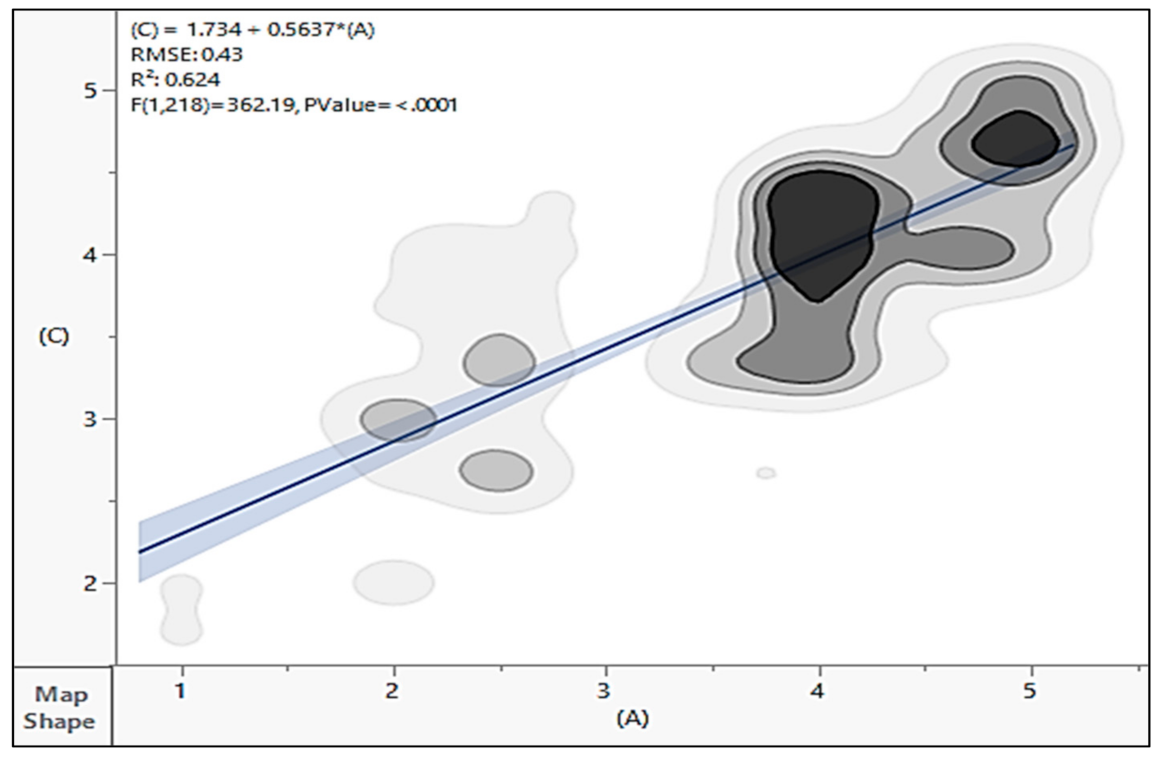



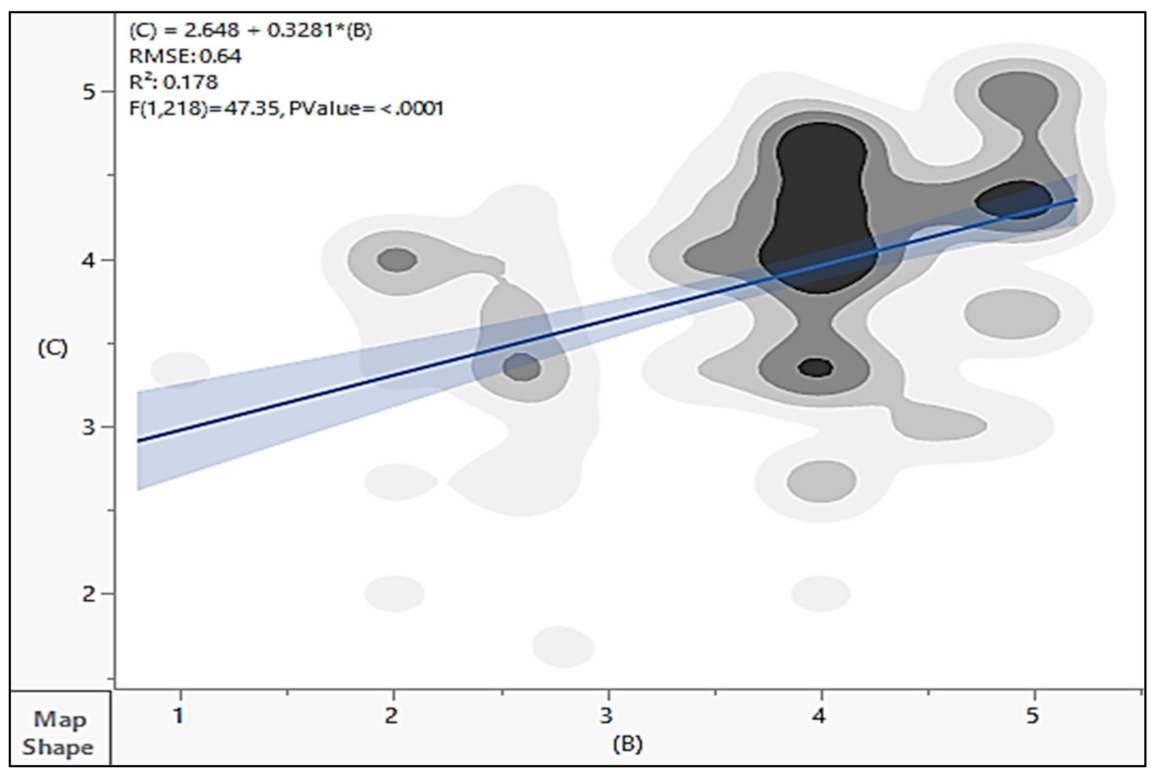
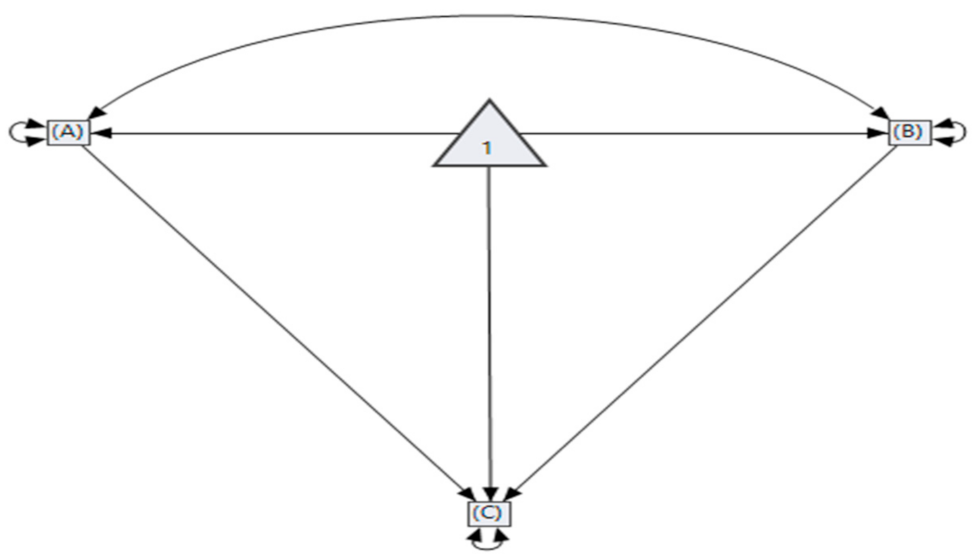
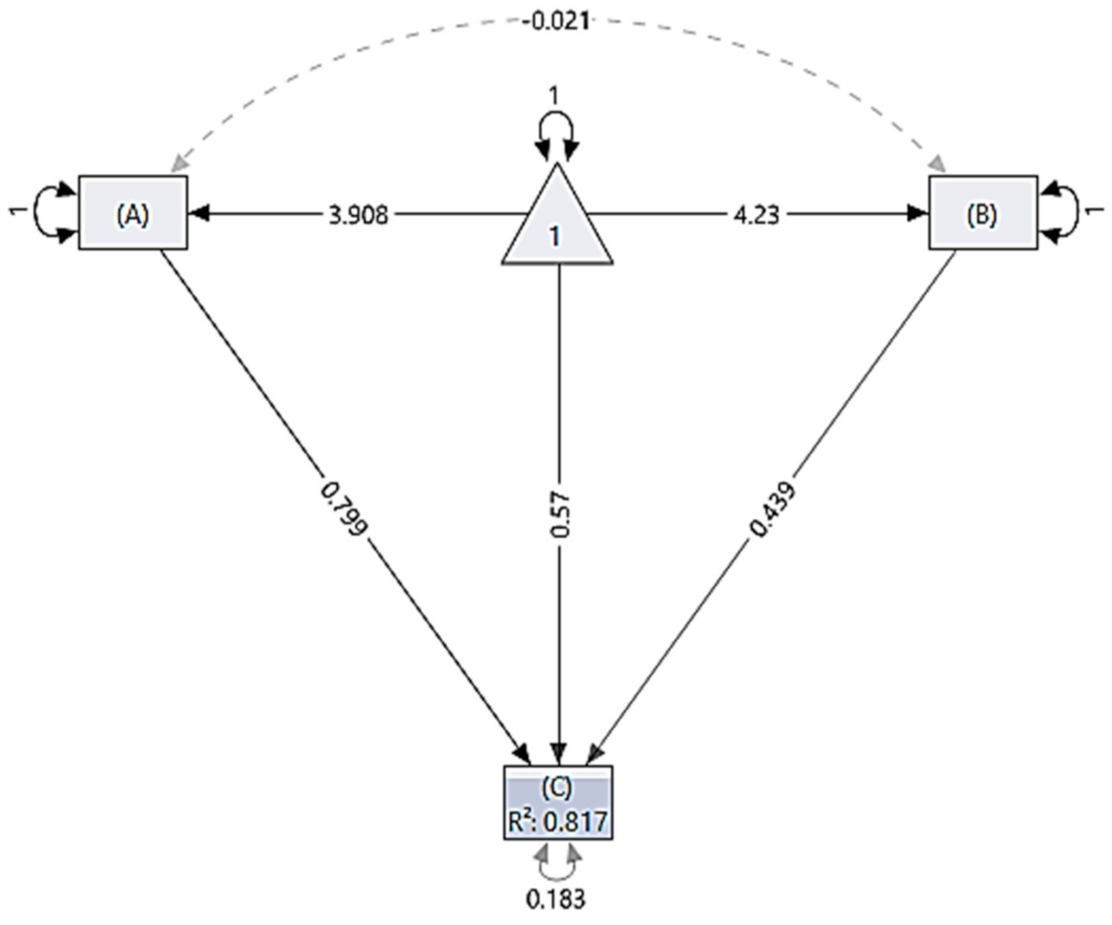
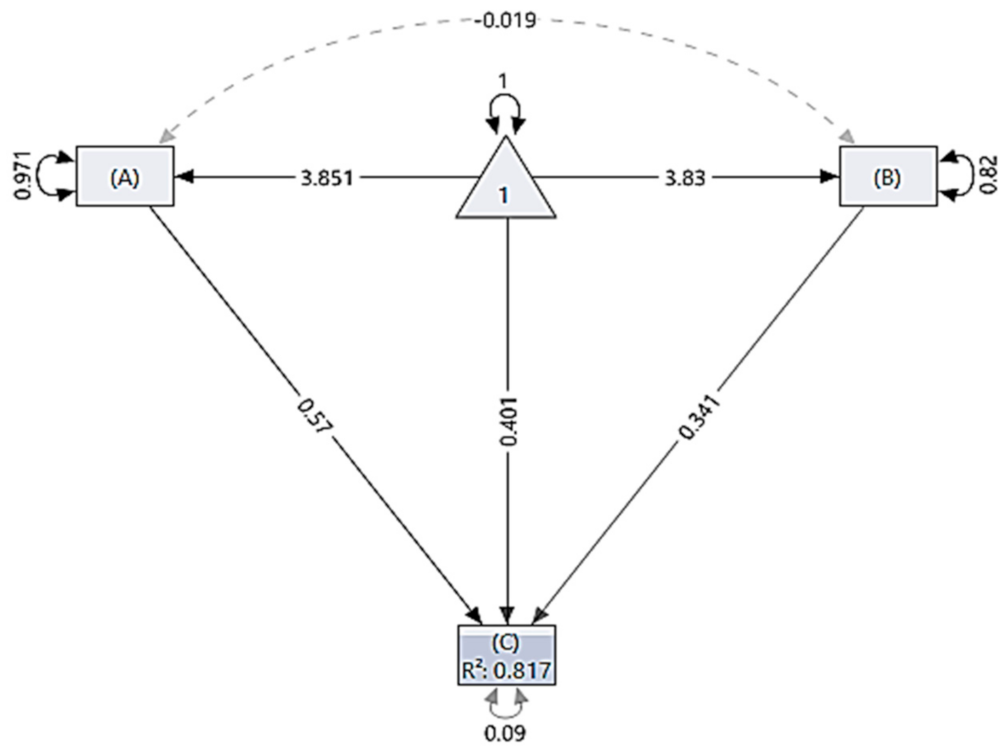
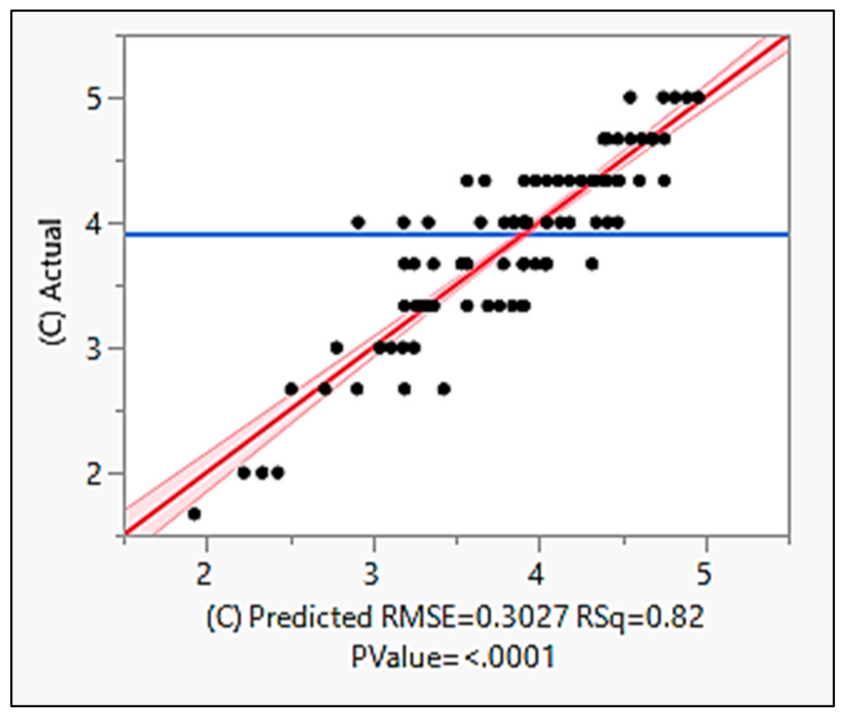
| Pillar | Definition | Source |
|---|---|---|
| Human | Human sustainability aims to take care of and improve the human capital in society. Investments in the health and education organization, access to servicing, nutrition, cognition and skills are all programs under the umbrella of human sustainability. Useful resources are cancelled, and areas accessible are confined, and there is a need to balance chronic growth with enhancements to health and attaining economic health for everyone. With the promotion of enterprise values that respect human capital, a corporation will view itself as a member of society. Communities around the globe may be positively or negatively affected by enterprise activities or impacted via methods used to supply uncooked materials. The development of competencies and human capacity to support the functions and sustainability of the organization and to promote the wellness of communities and society encompasses the human sustainability. | [87,88] |
| Economic | Economic sustainability aims to keep up the capital intact. If social sustainability focuses on improving social equality, economic sustainability aims to boost the quality of living. Within the context of business, it refers to the efficient use of assets to keep up company profitability over time. Critics of this model acknowledge that an excellent gap in modern accounting practices is to not incorporate the value of injury to the world in market prices. A more recent approach to economics acknowledges the limited incorporation of the ecological and social parts in this simulation. New economics is inclusive of ecological arrangement and social capital relationships among people and challenges if continual growth of capital risks causing harm to the ecological and human system. | [87,89,90,91] |
| Environmental | Environmental sustainability aims to improve human welfare through the protection of natural capital. Initiatives and applications are described as environmentally sustainable after they make certain that the wishes of the populace are met without the danger of compromising the wishes of destiny generations. Environmental sustainability locations emphasize how commercial enterprise can obtain advantageous financial results without doing any harm, within the short- or long-term, to the environment. An environmentally sustainable commercial enterprise seeks to combine all four sustainability pillars, and to attain this intention, everyone wishes to be handled equally, although in a few instances those might also additionally overlap. It is very critical to discover the unique form of inexperienced commercial enterprise to bring awareness to, because the four pillars gift particular characteristics. Businesses need to make a strategic decision about it so as to effectively incorporate the chosen approach into their policies and procedures. | [92] |
| Social | Social maintainability points to protect social capital by contributing and making administrations that constitute the system of our society. The concept suits a bigger view of the world in connection to communities, societies and globalization. It implies protection of future eras and recognition that what we do can have an effect on others and on the world. Social maintainability centers on keeping up and progressing social quality with concepts such as cohesion, correspondence and genuineness and the significance of connections among individuals. It can be empowered and upheld by laws, data and shared thoughts of correspondence and rights. Social supportability consolidates the thought of maintainable advancement as characterized by the Joined Together Countries economic improvement objectives. The guideline of feasible advancement addresses social and financial advancement that secures the environment and underpins correspondence, and thus, the economy and society and the biological framework are commonly subordinate. | [93] |
| A1 Trust | A2 Commitment | A3 Communication | A4 Loyalty | |
|---|---|---|---|---|
| Mean | 3.6772727 | 3.9681818 | 3.8954545 | 3.8636364 |
| Std Dev | 1.0338702 | 0.933343 | 1.0991808 | 1.1663256 |
| Std Err Mean | 0.0697035 | 0.062926 | 0.0741068 | 0.0786337 |
| N | 220 | |||
| B1 | B2 | B3 | B4 | B5 | |
|---|---|---|---|---|---|
| Gender-Sensitive Legal and Regulatory System That Advances Women’s Economic Empowerment | Effective Policy Leadership and Coordination for the Promotion of WESD | Access to Gender-Sensitive Financial Services | Access to Markets and Technology | Entrepreneurship Training, Mentoring and Support | |
| Mean | 3.8318182 | 3.7545455 | 3.9363636 | 3.8454545 | 3.7818182 |
| Std Dev | 0.9430768 | 0.9763071 | 0.9243265 | 1.0785274 | 1.1338045 |
| Std Err Mean | 0.0635822 | 0.0658226 | 0.0623181 | 0.0727143 | 0.0764411 |
| N | 220 | ||||
| C1 | C2 | C3 | |
|---|---|---|---|
| Economic–Financial Sustainability | Social–Human Sustainability | Environmental Sustainability | |
| Mean | 4.0000000 | 3.8136364 | 3.9000000 |
| Std Dev | 0.965146 | 1.0584711 | 1.142376 |
| Std Err Mean | 0.0650701 | 0.0713621 | 0.077019 |
| N | 220 | ||
| Source | DF | Sum of Squares | Mean Square | F Ratio |
|---|---|---|---|---|
| Model | 1 | 67.90269 | 67.9027 | 362.1871 |
| Error | 218 | 40.87054 | 0.1875 | Prob > F |
| C. Total | 219 | 108.77323 | <0.0001 |
| Source | DF | Sum of Squares | Mean Square | F Ratio |
|---|---|---|---|---|
| Model | 1 | 19.41139 | 19.4114 | 47.3545 |
| Error | 218 | 89.36185 | 0.4099 | Prob > F |
| C. Total | 219 | 108.77323 | <0.0001 |
| Source | DF | Sum of Squares | Mean Square | F Ratio |
|---|---|---|---|---|
| Model | 2 | 88.89571 | 44.4479 | 485.2309 |
| Error | 217 | 19.87752 | 0.0916 | Prob > F |
| C. Total | 219 | 108.77323 | <0.0001 |
Publisher’s Note: MDPI stays neutral with regard to jurisdictional claims in published maps and institutional affiliations. |
© 2021 by the authors. Licensee MDPI, Basel, Switzerland. This article is an open access article distributed under the terms and conditions of the Creative Commons Attribution (CC BY) license (https://creativecommons.org/licenses/by/4.0/).
Share and Cite
Ćurčić, N.V.; Grubor, A.; Muhović, A. Customer Relationship Marketing and Institutional Support Influence on the Women’s Companies Sustainability in Serbia. Sustainability 2021, 13, 10824. https://doi.org/10.3390/su131910824
Ćurčić NV, Grubor A, Muhović A. Customer Relationship Marketing and Institutional Support Influence on the Women’s Companies Sustainability in Serbia. Sustainability. 2021; 13(19):10824. https://doi.org/10.3390/su131910824
Chicago/Turabian StyleĆurčić, Nikola V., Aleksandar Grubor, and Almir Muhović. 2021. "Customer Relationship Marketing and Institutional Support Influence on the Women’s Companies Sustainability in Serbia" Sustainability 13, no. 19: 10824. https://doi.org/10.3390/su131910824
APA StyleĆurčić, N. V., Grubor, A., & Muhović, A. (2021). Customer Relationship Marketing and Institutional Support Influence on the Women’s Companies Sustainability in Serbia. Sustainability, 13(19), 10824. https://doi.org/10.3390/su131910824






